Book repair, book restoration, book preservation, book conservation or do nothing at all. With a worn or damaged book in hand, the choices for treatment (or no treatment) may seem bewilderingly complex. Add to this the contradictory advice and opinions offered by different authorities, it may seem impossible to come up with a ‘best’ course of action. Fortunately, by doing a little homework, inspecting the book, taking time to consider why the book is important to you and the use it will be put to, and lastly, your own personal preferences, and you will find your way to a solution.
There is much discussion and controversy surrounding the topic of book repair / restoration / rebinding / conservation / preservation. On one end are those book dealers and collectors who refuse to purchase books that exhibit any restoration or repair at all, preferring only to have those in their original state whatever that might be even if there is wear or slight damage. They will claim that restoration will lower the value. And it does—for them. Book historians rightly note that evidence may be lost through restoration, evidence that may tell us about design, working methods and materials, and how they changed and developed over time, or varied from one place to another. Such information can lead to other insights regarding not only how books were produced, but also the nature of the social and economic lives of people of those times. Inscriptions, bookplates, marginalia library stamps, all of which may be removed during restoration may also remove information about how books were used and the role they played in the lives of their owners.
Other dealers and collectors are concerned with the aesthetics of the books on their shelves. They want them to look good. For the collector who falls into this camp, the pleasure gained from enjoying a finely restored volume increases its value. For the dealer who sells to such a collector, they may receive a greater return selling the restored volume, even taking into account the cost of the work. Those in the first camp are willing to take the time required to find a copy of their object of desire in excellent condition and to pay the premium price it will command. Those in the second camp are willing to take an available copy in poorer condition that may be passed over by our first collector/dealer and then spend money to bring it back to life. Which leads to that most common of questions, “Does rebinding or repair lower or raise the value of a book?” To which there is no single uniform answer. Work poorly done will lower the value. It will need to be redone properly and it is almost always more difficult to undo a badly made repair than to repair a book correctly the first time. As noted, a book in excellent, unrestored condition will always bring a premium. Will the well-restored volume bring as much? It may not sell at all if presented to a collector or dealer who disdains restored books. But presented to someone who is open to restoration as a viable option it will bring a higher price than the same book did in its pre-restored condition. For a dealer whose primary aim is resale the calculation is made to determine if the project is worthwhile from a pure business aspect. First, they paid something to purchase the book. Then they need to pay for the work to be done on the book. Then they must be able to sell the book at a price sufficient to cover both those costs (and other costs of doing business) and make a suitable profit on the transaction. Some dealers rarely have work done. Either they don’t care for restored books, or they don’t have a market that provides a sufficient profit from the endeavor to make the extra work and effort worthwhile. Other dealers regularly have work done on their books for resale, finding it profitable to be able to purchase desirable books in poor but restorable condition at a deep discount.
What is considered “proper” treatment is not just a present controversy, but has changed over time, so that things commonly done in the past will often be frowned upon (or worse) now. Which may mean that fashions and ideas will change again leading future bibliophiles to look at some of what is now done and voice the question, “What on earth were they thinking?!” At one time, the covering of a book was considered an ephemeral housing intended primarily to protect what was considered truly important—the text. When the binding deteriorated, it was discarded and another made in its place in whatever the current style might be. Later, among wealthy collectors, it was still the contents that were considered most important, but so were aesthetics. Perfectly good bindings were removed and the books rebound, perhaps in a uniform style so that the books in one’s library might match, or would reflect the design style of the day. And typically, the dirty or ragged edges of the text would be trimmed down to clean it up and prepare it for new edge treatment such as gilding or coloring. Books can be found now that, having been bound repeatedly and trimmed each time, are left with no margin at all and sometimes even the edge of the text itself cut off.
In the last third of the 20th century attention turned to the binding itself, and especially the structure of the binding rather than just the surface decoration, as something worthy of study and preservation. This has given rise to the current fashion of preserving the original materials as much as possible (and sometimes more than possible). Books are often more likely to be preserved, restored or conserved rather than out and out rebound. But when rebinding is deemed necessary, if the budget will allow, it will often be fabricated in a style contemporary with the period of the book’s printing. And the text is trimmed only in extremely rare circumstances.
There are two more related questions to consider. First, what is the importance of our book and what makes it important? Some books are important as an ‘artifact’, i.e. as an object in itself it has some historical (or sentimental) significance. Another book may be more important for the information it contains. Certainly, these are not mutually exclusive categories. Second, what is the book’s current condition? Are the problems cosmetic, not affecting the structural integrity? Or are there serious structural or material problems that if left unaddressed may deteriorate further until there is no book at all. Books break down due to a variety of causes. Past careless handling is a common issue. Family Bibles, for instance, have often been used as a repository for all sorts of sentimental ephemera. Pressed flowers stain the pages. If stuffed with enough photos, newspaper clippings, greeting cards, locks of hair and prayer cards they will all act as a lever breaking apart the sewing at the spine. Perhaps the book has been stored in a basement, garage or other humid space allowing mold to flourish. Books, even well-cared for and properly housed will break down on their own due to what is wonderfully called “inherent vice”. This refers to fundamental instability of all physical substances including the paper, leather, cloth, ink and thread that go into making a book. Late 19th century books are an excellent exhibit of inherent vice. The paper, manufactured from wood pulp used a process that left a substantial amount of acid behind which has continued to eat away at the fiber. They are often bound in sheepskin which was plentiful and inexpensive. Unfortunately, sheep leather is both inherently weak and tends to delaminate in layers due to the way the fibers align in the skin as it grows. Additionally, like the paper, it was tanned in a way that left behind excess acid breaking down the fiber over the years until it turns to dust—the familiar ‘red rot’. And then to top it off, it was skived exceedingly thin making it much faster and easier for the binder to apply, but taking away a great part of whatever strength the skin might have had, since that lies deeper below the surface in the layer that was removed.
After clarifying why the book is important and its condition, some thought must be given to the intended use the book will be put to in the future. Is it to be preserved in original condition? Will it be handled frequently or rarely? Will it be resold or preserved in a collection for an indefinite time?
The last considerations are the most subjective and may require balancing competing and conflicting desires and intentions. Do you want to preserve the book as original as possible? Or is it more important to you to for the book to be attractive? If it is a book that will be used frequently, how will you balance a conflict between a desire for preservation of all-original integrity and the need for a book to be fully functional so it may be handled without causing more damage?
Some books when looked at through this series of questions will more easily present a suitable course of action. Incunables, books printed before 1500, for instance are historical artifacts worthy of preservation of the original material and structure, with only the most minimal intervention if absolutely necessary to prevent further damage or deterioration. A research library holding an atlas that is frequently called upon, may choose to disbind it, encapsulate each map in a mylar sleeve and return them to a post binder housed in a drop spine box. For them, the integrity of structure and form of the original volume is not the most pressing concern. It is the accessibility to the maps that they may be safely handled on a more regular basis without fear of damage. A collector with the same atlas, may be more interested in preserving the original appearance and/or integrity of the book. They may not handle it often and will likely be more cognizant of its weakness than would be a library patron, so the maps will not be subject to as much potential wear. Depending upon where they fell on the spectrum of preservation/restoration they may choose to have minimal or no work at all done to stabilize it, or they may choose to have a full restoration performed, if the condition of the book merited it.
 Having discussed these questions as a general approach to deciding upon a course of action (or refraining from action) here are a few case histories showing how we have applied them to books that have come through our shop. This first example of non-intervention shows a never-bound copy of Braganza, a 1775 play by Robert Jephson.
Having discussed these questions as a general approach to deciding upon a course of action (or refraining from action) here are a few case histories showing how we have applied them to books that have come through our shop. This first example of non-intervention shows a never-bound copy of Braganza, a 1775 play by Robert Jephson.
It wasn’t until the 19th century, by and large, that books were offered for sale already bound. Before that, as we see here, the printer would simply fold and collate the pages, and then loosely hold them together by sewing through three punched holes in the inner margin. The purchaser then took it to his favorite bookbinder to have it bound in a style to his liking and his pocketbook. We definitely don’t want to change anything here. Unbound, uncut books are unusual to find now, and they demonstrate how books were produced and distributed. To preserve it as-is is to preserve important historical information. Of course, it will need some protection, so a custom drop spine box was made to safely house it.
A drop spine box made to house the unbound copy of Braganza.
 Our next example moves forward a few years. This 1822 edition of The Pirate by Walter Scott is an early example of a printer’s binding. Though still conceived of as a temporary binding, it was now fabricated of boards covered with a cloth spine and paper boards, with a printed paper label on the spine. The expectation was still that the purchaser would take it to their own binder for a ‘real’ binding, so the pages were uncut, the sewing was minimally sufficient to hold it together and the structure and the materials were of low quality. Like Braganza, this copy in its present binding preserves a slice of book history, but this one is quickly deteriorating. The cloth spine had been adhered directly to the spine of the text and was now so fragile and brittle that it was not possible to fully remove it to have full access to enable the book to be easily resewn. It was possible, however, to carefully lift flaps of the spine material out of the way to enable the existing sewing to be reinforced in a way that would be minimally intrusive or visible. As the intention with the project was to conserve the books in as close to original condition as possible, while stabilizing the structure to prevent further damage, no other new material was added to fill in losses. Each book was then fitted with a mylar wrapper, and all were housed in a drop spine box to protect them on the shelf, as they remain fairly delicate.
Our next example moves forward a few years. This 1822 edition of The Pirate by Walter Scott is an early example of a printer’s binding. Though still conceived of as a temporary binding, it was now fabricated of boards covered with a cloth spine and paper boards, with a printed paper label on the spine. The expectation was still that the purchaser would take it to their own binder for a ‘real’ binding, so the pages were uncut, the sewing was minimally sufficient to hold it together and the structure and the materials were of low quality. Like Braganza, this copy in its present binding preserves a slice of book history, but this one is quickly deteriorating. The cloth spine had been adhered directly to the spine of the text and was now so fragile and brittle that it was not possible to fully remove it to have full access to enable the book to be easily resewn. It was possible, however, to carefully lift flaps of the spine material out of the way to enable the existing sewing to be reinforced in a way that would be minimally intrusive or visible. As the intention with the project was to conserve the books in as close to original condition as possible, while stabilizing the structure to prevent further damage, no other new material was added to fill in losses. Each book was then fitted with a mylar wrapper, and all were housed in a drop spine box to protect them on the shelf, as they remain fairly delicate.
Completed conservation treatment for The Pirate, with custom made drop spine box
The category of restoration is represented by this copy of Jardins Anglais. The boards and sewing were still in good condition, but the spine leather was fully deteriorated beyond saving. The book was rebacked making an entirely new leather spine replicating the gilt tooling on the original. This solution yields a book that preserves the look of the original and much of the original material, though not all. Additionally, the book is handsome and fully usable. “Restoration” may mean different things to different people. While some view it as meaning returning the book to “as-new” condition and so will extensively recolor original materials and replace whatever it takes to meet this aim, we take it to mean returning the book to looking like a well-cared-for book of its age while at the same time being fully functional. This means that we strive to finish with a 200 year old book that looks like a lovingly cared for 200 year old book that can be safely handled and read without fear.
Jardins Anglais has been rebacked with a new leather spine gilt to replicate the original
The last binding example demonstrates a facsimile period-style binding. French binders were known for their colorful leather treatments. This copy of Weber’s Der Freischütz Ouverture shows a reproduction of a typical such binding. A dye resist was sprinkled on the tan leather before being washed over with a thin red dye. The resist is washed out, leaving tan spots showing from the original leather color. Then a green dye is sprinkled over it all. The spine label is placed in the French fashion so that it reads from tail to head, adding to the air of authenticity. The result is a pleasing, historically appropriate and functional binding, though all of it is new.
A facsimile of a French period style binding
Besides the binding, the paper of the book can also need attention. Here the folding frontis plate of Taplin Improved; or, a Compendium of Farriery, a 1792 edition on horse care has separated along the crease and shows a few other minor tears. The loose piece is reattached using a hinge of thin Japanese tissue adhered with starch paste, and the tears are repaired likewise using an even thinner tissue. Together they return the plate to usable condition and prevent further damage that might occur by the loose section sliding about and extending beyond the edges of the text, or even of being lost completely.
A folding frontis plate with one section detached along the fold and other tears and losses
The folding frontis showing the completed repair
And now we finish with a restoration of a dust jacket. On modern first editions, the majority of the value lies in this ephemeral piece of paper. They quickly become tattered and torn, and then thrown away making them much scarcer than the book on which they were issued. A famous example demonstrating the value of a dust jacket is Fitzgerald’s The Great Gatsby. A first edition book without the jacket can be had for under $10,000. A copy with a restored dust jacket will set you back nearly 10 times that. While not quite in the same category, the dust jacket for Robert Heinlein’s Rocket Ship Galileo is a desirable accompaniment to the book. The unrestored copy here shows numerous tears and losses, including the significant one at the head of the spine including part of the title. The restored copy shows the losses have been filled and the missing text and image have been in-painted. As with our binding work, the aim here is not to make a jacket look as-new, but only add enough to make it complete.
An unrestored dust jacket for Rocket Ship Galileo with numerous losses
The restored jacket with losses filled and missing text and image inpainted
While there are no cut and dry answers to the question of how a damaged or deteriorated book should be treated, by careful consideration along the lines suggested here, you’ll find your own solution.
______
Jack and Taff Fitterer have been bookbinders in private practice in rural upstate New York since 1983. You may see other examples of their work and contact them at their website www.FittererBookbinding.com



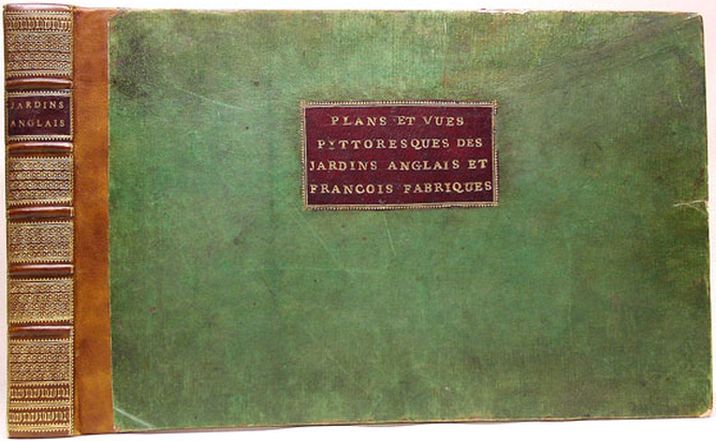
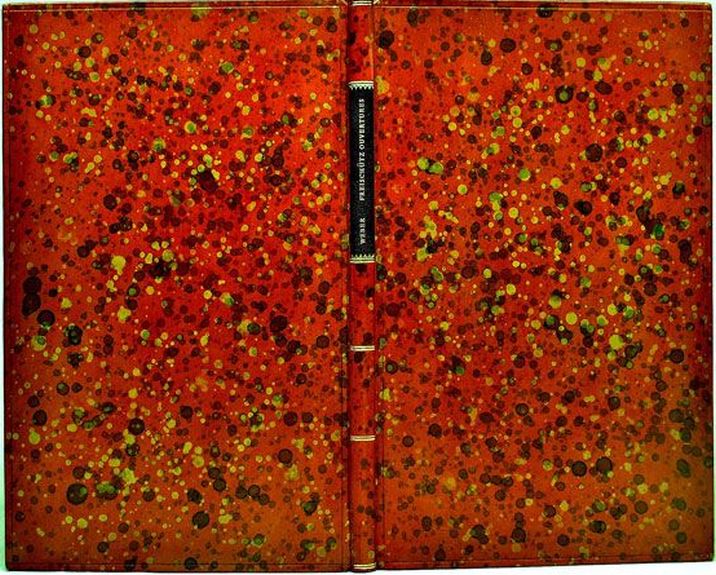
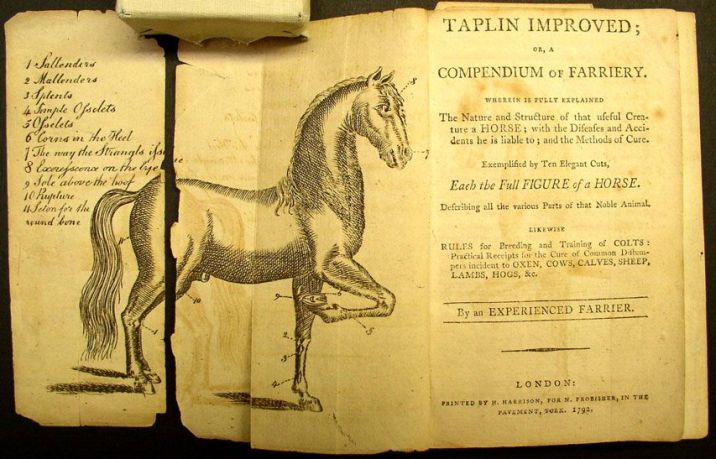
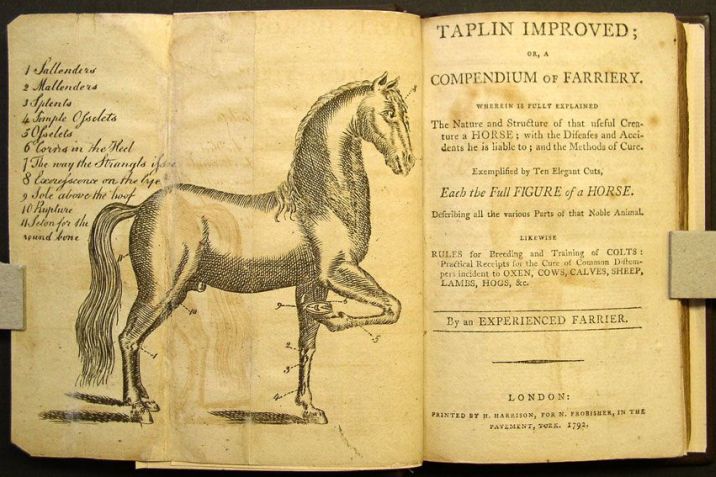
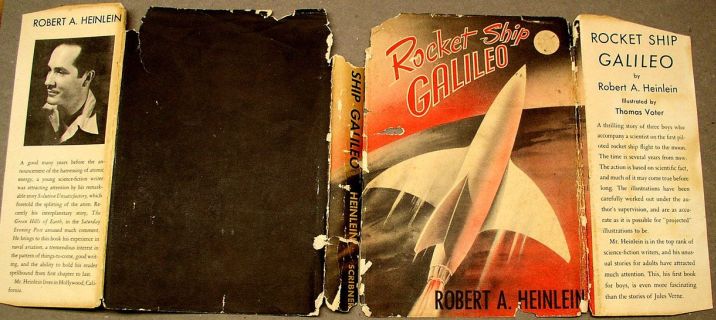
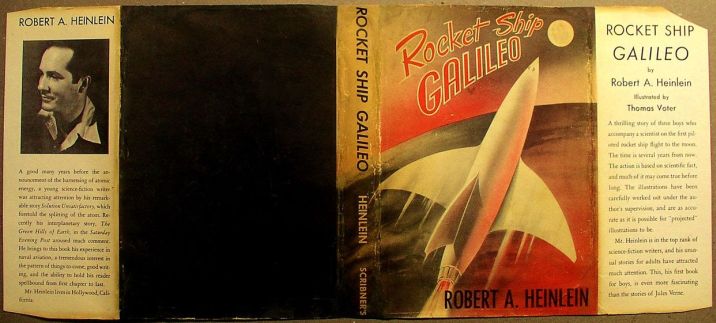
{ 1 comment… read it below or add one }
Thank you very interesting and a lot of sensible suggestions